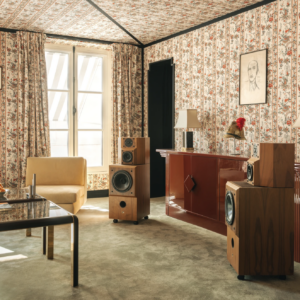Hôtel de la Marine Reopening in Paris
by habituallychic
06 . 06 . 21
I feel like I’m definitely going to have Stendhal Syndrome the next time I go to Paris. For those who aren’t familiar with this illness, it’s is “a psychosomatic condition involving rapid heartbeat, fainting, confusion and even hallucinations, allegedly occurring when individuals become exposed to objects, artworks, or phenomena of great beauty.”
Another opening in the City of Light that I learned of from Sally Perrin and Bruno Frisoni is the Hôtel de la Marine, which opens to the public on 12 June 2021. Not a hôtel in which you stay but a hôtel particulier of epic proportions. This unique monument in the heart of Paris has refurbished 18th-century apartments, stately reception rooms, and a restaurant in a building that the Centre des monuments nationaux has fully restored.

If you’ve been to Paris, you’ve most certainly seen the Hôtel de la Marine building (in red above) that sits cross the rue Royale from the Hôtel de Crillon, which is an actual hotel. Paris is nothing if not confusing. Both sit overlooking the Place de la Concorde.

Let’s start at the beginning with the history of this area of Paris that has been outlined by the Hôtel de la Marine.
Place Louis XV, known as Place de la Concorde today, was made because Paris City Hall wanted to build a statue paying tribute to King Louis XV in 1748. An equestrian statue was ordered from Edmé Bouchardon and after the idea emerged to make a square in the king’s honour, based on Place Vendôme and Place des Vosges.
After other areas had been suggested, King Louis XV decided on a site belonging to him towards the west of the city, the Tuileries Garden. An architecture competition was then launched for developing this site. There were 19 proposals put forward but none of them satisfied the king. Following five years of debate, it was Ange-Jacques Gabriel, the king’s chief architect, who created the definitive plans for the future square Place Louis XV by combining the different plans for development.
The king’s statue was placed in the middle of a square made up of gardens in dry ditches edged with balustrades. The sculpture portraying the monarch represented him in a Roman style, on horseback without a saddle or stirrups. The south end of the square ran alongside the River Seine, while the north end was lined with two twin palaces standing either side of Rue Royale and featuring classic monumental facades. To the west, the square opened up to the Champs-Elysées and the Cours-la-Reine promenade.

Once the plans had been drawn up and development work on the square had got under way, it was time to find a role for the two palaces on the north side of the square.
The building to the west became the opulent home of the Duc d’Aumont. It was later purchased by the Comte de Crillon, whose family resided there until 1907. The famous luxury Hôtel de Crillon, which currently occupies the building, took its name from its previous owners.
In 1765, the decision was made to house the Garde-Meuble de la Couronne, the institution in charge of the king’s furniture, in the eastern palace, the future Hôtel de la Marine. At first, the Garde-Meuble de la Couronne was supposed to occupy only part of the building, but it ended up filling the entire edifice in 1767. Pierre-Elisabeth de Fontanieu, the first Intendant to head the Garde-Meuble, made the most of this to develop the building so that it fully met the needs of his administration by including storage areas, workshops, lodges, exhibition galleries, and more.
A forebear of today’s public body Mobilier national, this institution was in charge of supplying and maintaining the furniture of royal residences: Versailles, as well as Compiègne, Fontainebleau, Marly, Choisy, Trianon, Rambouillet, Saint-Germain-en-Laye, and Montreuil.
The institution was responsible for choosing, purchasing and maintaining the king’s furniture, from beds to everyday chairs. It was also in charge of conserving the royal collections of weapons, armour, fabrics, wall hangings, hardstone vases, bronze works, and Crown diamonds.

The French Revolution, which broke out in 1789, forever changed the history of this palace on Place Louis XV. Because it symbolized the country’s government and royal ostentation, the days of the Garde-Meuble de la Couronne were numbered.
Two events marked the place’s history. On 13 July 1789, the revolutionaries seized the weapons on display in the arms room. The next day, they went looking for ammunition at Bastille prison. And that heralded the start of the revolution. It is thought that the first shots against Bastille prison were fired by canons fitted on gun carriages with silver inlays that the King of Siam gave as gifts to Louis XIV in 1684. They had been seized the previous day in the royal collections of the Garde-Meuble de la Couronne.
On 16 September 1792, the Crown Jewels were stolen at the Hôtel de la Marine. At night, around forty people got inside the reception room where the jewels were displayed and stole goods worth around 30 million French francs.

When the revolution got under way, King Louis XVI left Versailles for Paris. All state institutions in Versailles had to therefore move to the capital. But a considerable challenge emerged where in Paris could they be housed? The navy ministry, with Count de la Luzerne and Jean-Baptiste Berthier at its helm, got permission from the Intendant of the Garde-Meuble de la Couronne, Marc-Antoine Thierry de Ville d’Avray, to settle in the palace housing the Garde-Meuble in 1789.
During the French Revolution in 1789 the statue of Louis XV of France was torn down and the area renamed the Place de la Révolution. The new revolutionary government erected a guillotine in the square, and it was here that King Louis XVI was executed on 21 January 1793 and Marie-Antoinette on 16 October 1793. They were most likely viewed from this loggia and the one across rue Royale.
When the monarchy fell, Place Louis XV, made in tribute to the king, changed its name to Place de la Révolution, then to Place de la Concorde from 1795. The Obelisk of Luxor was erected on the site of the Louis XV statue in 1836.
When the navy ministry first occupied the Garde-Meuble, they only took over the rooms on the second floor and in the western part of the first floor. Less than ten years later, it occupied the entire building. This marked the start of two centuries of France’s navy ministry being based in this palace, which henceforth bore the name Hôtel de la Marine. It was not until 2015 that the navy ministry left the building and plans were begun to renovate the building back to its 18th-century splendor and open it to the public.

The Hôtel de la Marine was built between 1757 and 1774 with a façade by Ange-Jacques Gabriel, First Architect to the King, who’s initial can be seen on the ceiling of the loggia. It along with the Hotel de Crillon remain among the best examples of Louis Quinze style architecture in Paris.

Delia von Neuschatz visited the Hôtel de la Marine in 2019 wrote an article for New York Social Diary highlighting the renovation and more history. She said that “the refurbishment is painstaking. Here, a restorer uses a surgical scalpel to peel away layers of paint. The restorers get their blood tested weekly for lead.”
“It is in one of the Hôtel’s front-facing salons that Marie Antoinette’s death certificate was signed and her execution witnessed from the colonnaded terrace, aptly known as the Balcony of History. Later, the palace serviced imperial ambitions when in 1804 Napoleon I and Josephine held their coronation ball there and again in 1810 when Napoleon, desirous of a legitimate heir, celebrated his marriage to his second wife, 19-year-old Marie-Louise, Archduchess of Austria, and a great-niece of Marie Antoinette. In 1848, the act that abolished slavery in France was signed there too. The building was witness to history again during the German occupation of France (1940 – 1944), when Hitler’s navy took over the building and cut small spy holes in the window shutters in the corner room overlooking the Rue de Rivoli and the Place de la Concorde.”
– Delia von Neuschatz

“Peeling back the layers to Louis XV is a little bit like archaeology,” said Bénédicte Lefeuvre, Director General of the Center for National Monuments.

The Escalier d’Honneur or the Stairs of Honor – the building’s main staircase.

At the helm of the Garde-Meuble de la Couronne was an Intendant. As an officer of the king’s court, he was provided with accommodation on site in lavish apartments that reflected the prestige of his job.
Developed in 1765 by Pierre-Elisabeth de Fontanieu, the Intendant’s apartments were redesigned from 1786 by Marc-Antoine Thierry de Ville d’Avray. They exemplify what was perceived as the ideal apartment at the end of the century of Enlightenment, including at least an antechamber, a bedroom and a small private room.
The Intendant’s apartments are located on the eastern side of the first floor, the ‘noble floor’, today with a view over Place de la Concorde and Rue Saint-Florentin. As the years have gone by, these apartments have changed in accordance with their occupants, but today they include:
On the north side, the apartments of Thierry de Ville d’Avray: an antichamber, a bedroom, a small private meeting room and a bathroom.
On the south side, the bedroom of Madame Thierry de Ville d’Avray.
The two apartments are linked by the reception rooms: the salon and dining room.
On the court side, the bedroom of Pierre-Elisabeth de Fontanieu, as well as the mirrors room and the golden room installed by the Intendant.

The architect heading the project, Christophe Bottineau, pored over 18th century records as did 18th century specialists, Joseph Achkar and Michel Charrière. Comprehensive inventories of these apartments have made near-exact reconstructions of their contents possible.

“The walls of the diplomatic room of the Hôtel de la Marine must have kept many secrets. But did you know that they could share them too? Indeed, behind the wall running along the fireplace was a cramped hiding place from where a prying ear could eavesdrop on debates, which were doubtless heated and which took placed in the diplomatic room. However, claustrophobes were advised to stay out of this hiding spot!”


The gallery of military ports overlooking the cour d’honneur.
Military ports are the focus of a sculpted wood decor dating back to the years 1867 to 1870. This colonial-style gallery gives pride of place to France’s five main military ports at the time: Cherbourg, Brest, Lorient, Rochefort and Toulon.Their names are written in golden medallions on wooden panels painted to look like ebony or mahogany.

There is a good deal of sleuthing involved. “Peeling back the layers to Louis XV is a little bit like archaeology,” says Bénedicte, describing the sourcing of furniture, clocks and artworks that once adorned the rooms. Some items have been traced to private collections and their return negotiated. Lost or missing pieces will be replaced by equivalents that are as faithful to the originals as possible. The project is not limited to furniture and objets d’art however. The “excavation” extends to the original paint, wallpaper and even textiles. The Hôtel has been restored a number of times since the Revolution, but “for the first time, we have discovered exactly how the apartments were in the 18th century.” That goes for the servants’ quarters too, some of which will also be on display, offering a glimpse into the “upstairs downstairs” of the 1700s.
– Bénédicte Lefeuvre, Director General of the Center for National Monuments via New York Social Diary




“Pierre-Élisabeth de Fontanieu, the first Intendant of the Garde-Meuble de la Couronne to live in the Hôtel de la Marine, was a bachelor known for his taste for opera women of loose morals. He ordered the development of this cosy private room, which revealed his penchant for licentiousness now called the Mirrors Room.
You reach this room through his bedroom to find large wall mirrors there, framed with magnificent golden sculpted decors. The mirrors are painted with floral decors, bird decors, decors of women and decors featuring little chubby cherubs. Yet at first, decors of unclad women standing on pedestals, not cherubs, adorned these mirrors! It was the wife of Marc-Antoine Thierry de Ville d’Avray, who succeeded Fontanieu as Intendant, who altered the paintings out of prudery. The decor remained nonetheless delicate and seductive.”










L’Escalier de l’Intendant or the Steward’s Staircase.

Secret passageway.



Only a few rooms are highlighted on the Hôtel de la Marine website so I can’t wait to visit in person and find out more about them.







Les embrasses de rideaux.





The French love to add contemporary touches to historical buildings so a glass roof created by Hugh Dutton covers the Intendant’s court.
The Hôtel de la Marine will also play host to temporary exhibitions and a restaurant from Alain Ducasse and another by Jean-François Piège, as well as, a café and a tea room.
You can schedule a visit online now for when the Hôtel de la Marine opens to the public on 12 June 2021. I can’t wait to get back to Paris and visit later this year.



